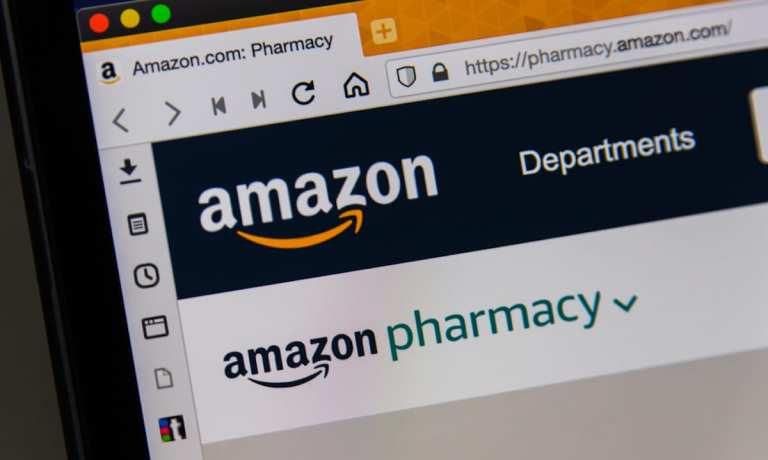Amazon Makes Its Latest Healthcare Play In Telemedicine

Amazon has announced its latest big push into healthcare, with an announcement on Wednesday (March 17) that it will expand its telehealth service, Amazon Care, to employees in all 50 states starting this summer. It also plans to make the service available to other employers later this year.
“Amazon Benefits has been the enterprise customer that we’ve been serving to date. Now, looking at other enterprises, understanding their needs, we think a lot of the needs are similar,” said Kristen Helton, director of Amazon Care, according to reports.
Launched two years ago, Amazon Care provides the firm’s employees in Washington State with free telehealth consultations and in-home visits from nurses for a fee. Though it was initially developed for the care and management of chronic conditions, allowing patients more consistent access to a consistent team of providers, the program has since branched out into more primary care services for users. “We really need to give clinicians the tools to provide excellent care,” Helton noted.
The telehealth part of the program is rolling out nationwide, while the in-person service side of the business remains only available in Washington State and in the region immediately surrounding Amazon HQ2 in the Washington, D.C. metro area.
This is Amazon’s latest, but far from the only, move in the healthcare arena of late. The eCommerce giant has increasingly sought to take on the healthcare market in the last several years. In late 2020, the firm opened up a separate Amazon Pharmacy storefront with two-day prescription delivery for Prime members.
“As more and more people look to complete everyday errands from home, pharmacy is an important and needed addition to the Amazon online store,” Doug Herrington, senior vice president of North American consumer, Amazon, said in a statement. “PillPack has provided exceptional pharmacy service for individuals with chronic health conditions for over six years. Now, we’re expanding our pharmacy offering to Amazon.com, which will help more customers save time, save money, simplify their lives and feel healthier.”
Amazon is also offering discounts: Prime members paying out of pocket get a 40 percent discount on brand names and an 80 percent discount on generics. They can also choose from over 50,000 participating drugstores.
That move followed a partnership with employer health provider Crossover Health to launch in-person employee health clinics, which now serve Amazon workers across 17 sites in Texas, Arizona, Kentucky, California and Michigan.
Not all of Amazon’s healthcare moves have been in a forward direction, however. It kicked off the year by pulling the plug on Haven, the Silicon Valley healthcare disruption startup launched in 2018 by Amazon, Berkshire Hathaway and J.P. Morgan Chase.
“The Haven team made good progress exploring a wide range of healthcare solutions, as well as piloting new ways to make primary care easier to access, insurance benefits simpler to understand and easier to use, and prescription drugs more affordable,” Haven spokeswoman Brooke Thurston said, noting that the three firms would continue to work together on healthcare together informally to develop solutions “tailored to address the specific needs of our individual employee populations and locations.”
It seems Amazon is taking that path pretty seriously as it continues to roll out healthcare solutions — albeit individually, as pharmacy, clinics and Amazon Care are all run as independent initiatives within the company. When asked directly if those services will be combined in a single package offered to other employers, Helton declined to speculate.
But even without bundling its in-person care, pharmacy services and telehealth initiative into a single offering, Amazon is still taking a major step into the employer telehealth market, which has grown quite crowded and competitive over the last year. According to the Centers for Disease Control and Prevention (CDC), during the very first week of the pandemic, the final week of March 2020, telehealth visits rose 154 percent over 2019. And as that explosion carried on for the remainder of 2020, Ran Shaul, co-founder and chief product officer for telehealth provider K Health, told PYMNTS in a recent conversation, it has become increasingly clear how technology can make healthcare much more accessible for everyone.
“For $19 on a platform, you can solve 85 percent of all the reasons a patient will go to a primary care doctor,” Shaul said. “So you don’t have to think twice. That’s the big promise here. Stop thinking about a doctor’s visit and go do it now. That doctor visit is so important because it will determine your health adventure.”
The market remains a challenging place to operate. Amazon is the new kid on the block, dealing with a host of FinTech startups attempting to innovate their way into the space, alongside other big-name players like CVS and UnitedHealthcare. There is also the uncertain regulatory future of telehealth services in the U.S. in a post-pandemic world — and the question of whether the Centers for Medicare and Medicaid Services will continue allowing for the full reimbursement of telehealth services.
But Amazon has a lot of confidence that it can earn a big win in the space, without necessarily having to be the winner. “Healthcare is an incredibly large space, and there’s lots of opportunity. We see there’s room for more than one winner in the space,” said Helton.
True, but there are also far more players entering than can win at this point. It will be interesting to see whether Amazon will find a way to be one of the players that makes it into that winner’s circle.
Read More On Healthcare:
- Here’s Why the Next Doctor Visit Could Be With a Hologram
- J&J MedTech Navigates Headwinds, Eyes Growth Surge in Second Half of 2024
- From Eye Scans to Drug Design, AI Takes on Healthcare
- AI Opportunities, Cyber Vulnerabilities Define UnitedHealth’s Latest Earnings